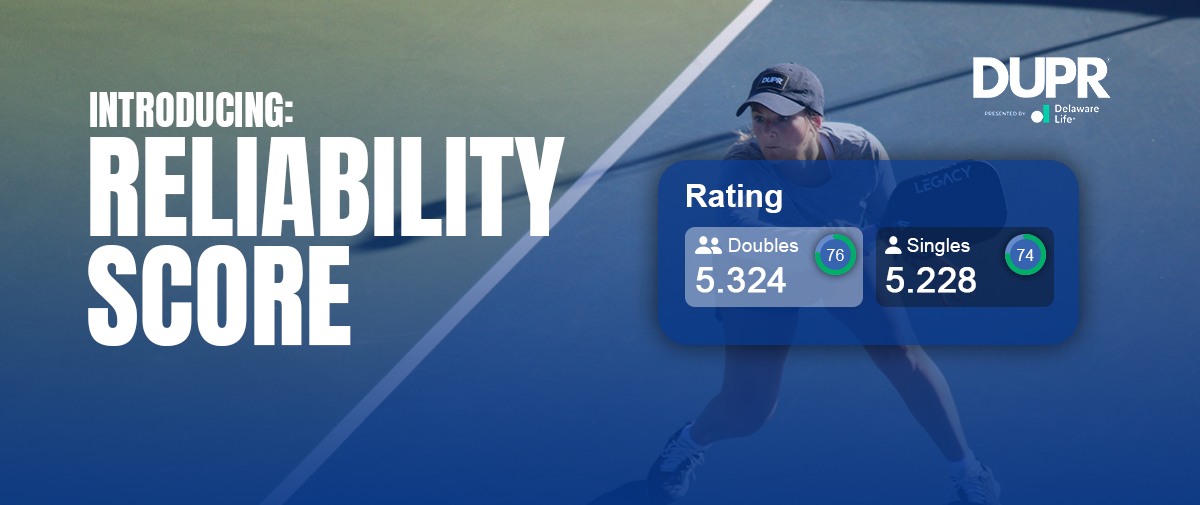
When it comes to pickleball ratings, you’d think every player on the court moonlights as a data scientist. From Facebook forums to sideline chats, players love to debate how ratings work, how they should work, and why their own DUPR hasn’t budged despite a weekend full of wins.
Fortunately, we finally have some answers from an actual data scientist — Sarah Carpenter, DUPR’s lead data guru and the mastermind behind the sport’s most-used rating system.
In a recent appearance on the Talk Pickle to Me podcast, Carpenter shed light on the biggest challenges DUPR faces in delivering fair, accurate ratings.
Challenge #1: The Complex Math Behind Pickleball Doubles
Pickleball doubles matches are at the core of the sport, but they present a unique challenge for any rating system. Unlike tennis or golf, where performance is individual, pickleball doubles results rely on two players working together.
“The hardest part of rating doubles is that we don’t have an eye on the court to see who’s controlling the match,” Carpenter explained. “The algorithm has to make assumptions. It knows the match score, but it doesn’t know who hit the winning shots or made the key errors.”
This lack of visibility means DUPR’s algorithm can't accurately assess individual contributions in doubles matches. To address this, Carpenter hinted at future possibilities involving artificial intelligence (AI) to provide deeper insights by tracking player actions during matches.
Challenge #2: Why You Can Lose a Close Match and Still Drop in Rating
One of the biggest frustrations players have with DUPR is that they sometimes see their rating drop after a close match against stronger opponents. Carpenter explained why:
“In the current algorithm, the simplest rule is that when you win, you go up, and when you lose, you go down. But if you lose a close match, even if you were expected to lose, the rating system doesn’t reward you because it didn’t learn anything new — it already knew your opponent was stronger.”
This issue has led to criticism from players who feel their performance in tough matches isn’t being recognized however the key reason for this change was to simplify the system and make it more transparent for players. Before the change, players could see their ratings increase after a close loss, which caused confusion. DUPR decided to prioritize a straightforward rule: win, and your rating goes up; lose, and it goes down.
Here’s how Carpenter explained it:
“At that time, people didn’t know what they needed to do to improve their rating. You’d go on the court, and your goal wasn’t just to win — it was to win by a specific margin, or avoid losing too badly. That made it hard to understand. So, we simplified it: if you win, you go up; if you lose, you go down.”
Carpenter acknowledged that it made things tougher for players in underdog situations, where a close loss against a higher-rated player still results in a rating drop. She hinted that future adjustments could reintroduce elements of rewarding players for overperforming expectations, suggesting DUPR is constantly refining its approach to balance accuracy with user satisfaction.
Challenge #3: The Impact of Sandbagging and Duplicate Profiles
Another significant challenge DUPR faces is player manipulation of the rating system. Some players create duplicate profiles or attempt to delete old results to reset their ratings.
“We’re aware of players creating multiple profiles or erasing their ratings to start fresh,” Carpenter said. “That’s why we’ve introduced a reliability score, which tracks how often a player competes and how reliable their rating is. If you aren’t playing regularly, your reliability score drops.”
DUPR has also established a “DUPR Police” team to monitor suspicious activity and ensure players are using the system fairly. According to Carpenter, players found manipulating their ratings may be restricted or banned from the platform.

Challenge #4: Why DUPR Doesn't Separate Ratings by Gender or Age
While the unified approach ensures a more robust dataset, it does come with challenges. Some players perform differently in mixed doubles than in gender-specific doubles. For example, Colin Johns is widely regarded as more dominant in men’s doubles than in mixed doubles, but his DUPR rating doesn’t reflect that nuance.
So, is DUPR planning to split ratings into categories? Not exactly — but they are exploring the idea of subscores to give players more detailed insights into their performance across different formats.
“We want to provide players with insights into how they perform in mixed doubles versus gender doubles,” Carpenter said. “But instead of separate ratings, we plan to offer these as subscores. That way, players can see their strengths and weaknesses in different formats, without diluting the overall dataset.”
The unified rating system also reflects the unique culture of pickleball, where it’s common to see players of different generations competing together. Unlike other sports, pickleball encourages a mix of ages and genders on the court. By maintaining a single rating system, DUPR ensures that every player’s rating is meaningful — whether they’re playing against someone 20 years younger or in a mixed doubles match.
“We understand that mobility, power, and play styles can vary based on age and gender,” Carpenter said. “But pickleball is a sport where these differences are regularly tested in real games. The rating system needs to reflect that reality.”
In the future, as DUPR’s dataset grows to include millions more matches, there may be more opportunities to provide additional layers of analysis. For now, the unified approach ensures the system remains inclusive, adaptable, and reflective of how pickleball is truly played — at every level, by players of all backgrounds.

Challenge #5: Rally Scoring vs. Traditional Scoring
DUPR also faces challenges in adjusting for different scoring formats. Rally scoring, which is used in Major League Pickleball (MLP), produces tighter match scores compared to traditional side-out scoring.
“In rally scoring, you’re always scoring points, whether you’re serving or not, so the matches are closer,” Carpenter said. “In our next algorithm update, we’ll adjust the system to better reward dominant performances in rally-scoring matches.”
So What’s the Fastest Way to Improve Your DUPR?
According to Carpenter, the best way to raise your DUPR is to play against players at your level — and win. Simply beating lower-rated players won’t boost your rating significantly, and playing against much stronger opponents without winning won’t help either.
“If you believe you’re better than your current rating, go play up,” Carpenter said. “But you have to win. That’s how the system works.”
So, What's Next for DUPR?
Carpenter revealed that DUPR’s next algorithm update, expected in early 2025, will include several improvements to address these challenges. Among the changes:
- Minimum Movement for Active Players: DUPR will introduce a “minimum movement” rule to ensure active players’ ratings continue to adjust even if they play frequently. This will prevent players from getting “stuck” at a certain rating.
- Adjustments for Rally Scoring: The algorithm will be updated to reward dominant performances more accurately in rally-scoring matches.
- Future Analytics: DUPR plans to introduce more detailed player analytics, including subscores for mixed and gender doubles and stats like win rates in close matches or deciding games.

Love Pickleball? Join 100k+ readers for free weekly tips, news & gear deals.
Subscribe to The DinkGet 15% off pickleball gear at Midwest Raquet Sports











